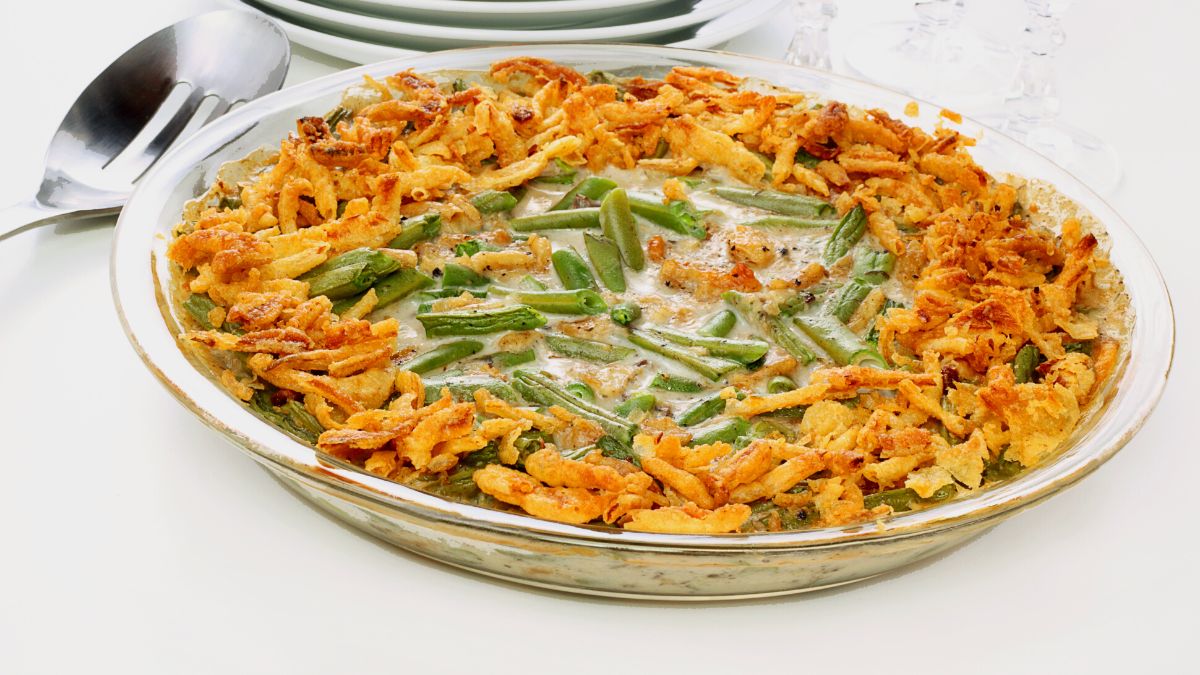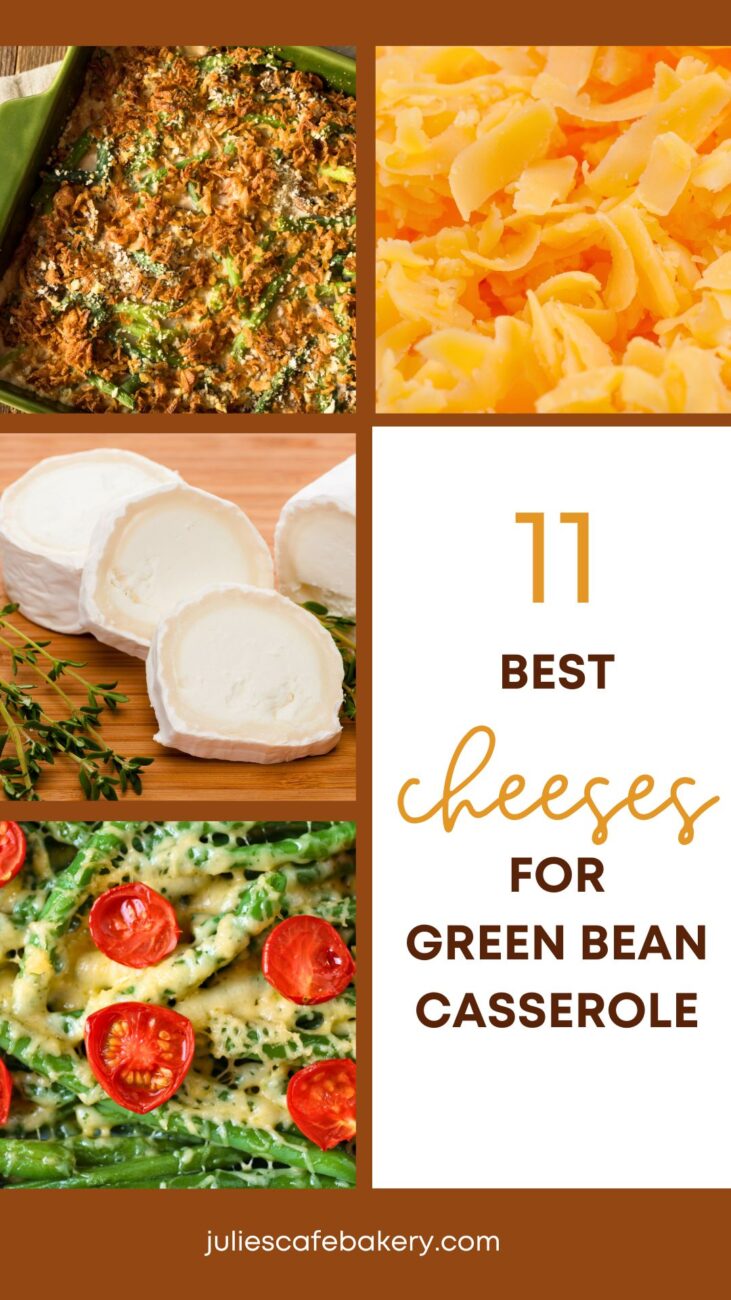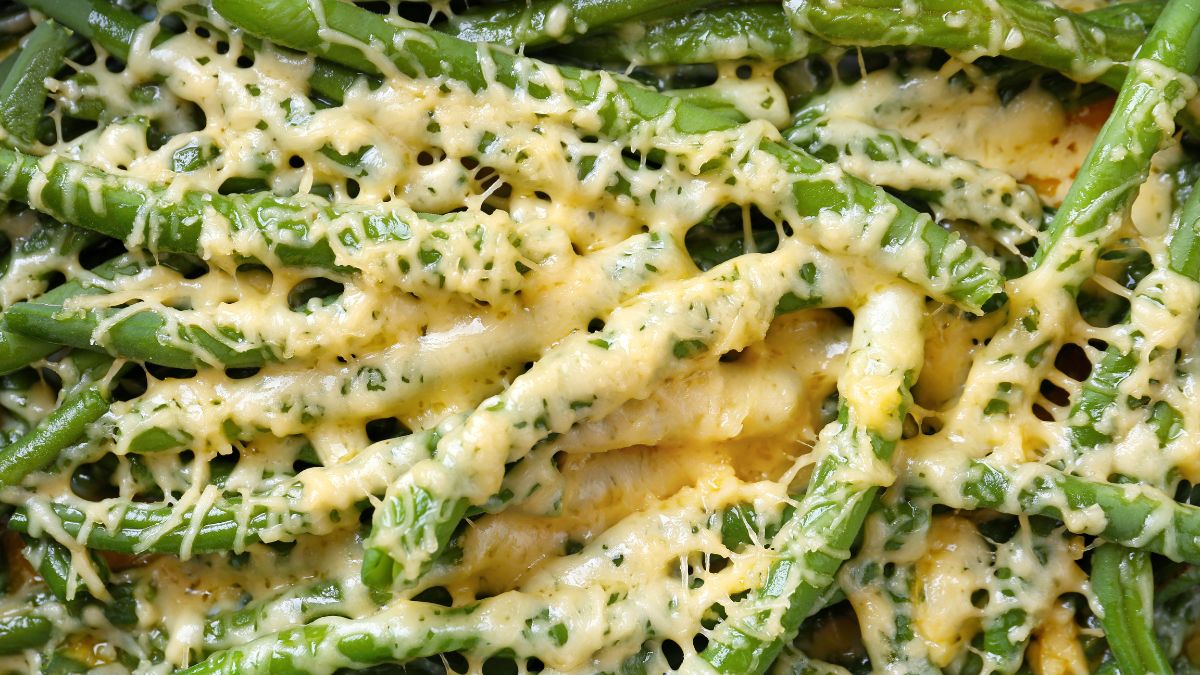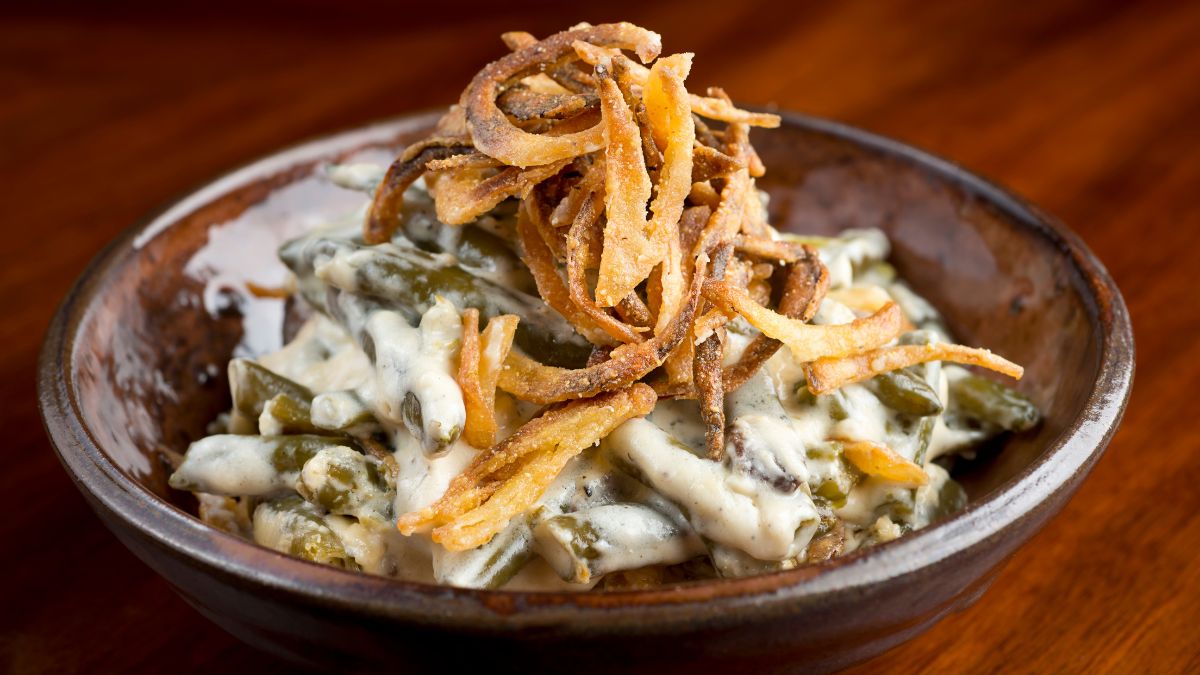What Cheese Goes in Green Bean Casserole? 11 Ideas to Try

Green bean casserole is a staple dish on my holiday table. Its taste varies due to the ingredients you choose, but a few of them are irreplaceable. Green beans alone have a bland taste all in all, but I love this because you can add something different each time and get a whole other flavor dimension. Crispy fried onion has a pinch of sweet aftertaste, so this dish covers almost all sensations. What makes its flavors pop is the cheese, so what cheese goes in green bean casserole?
If you want a strong and sharp flavor in your green bean casserole, use aged cheddar, Parmesan, or Tête de Moine. If you go for a milder taste, opt for Tilsit, Young Gouda, and Edam. For a bit different taste dimension, go for fresh cheeses like ricotta, mozzarella, and Chèvre, as the cheese choice depends solely on your taste.
Cheese is the most important secondary thing when it comes to food. I always go for more intensive cheeses for a finishing touch if I’m serving cleat cuts of meat or milder ones when served with flavorful and spicy dishes. Here’s a long list for you to choose the best cheese for your taste!
The Ultimate List of Best Cheese Options for Green Bean Casserole
One of the best ways to take this dish to the next level is by adding cheese. There are many different cheese options that can be used in green bean casserole, but some stand out more than others. Here they are!

Cheddar
You’ll probably see cheddar in most of the green bean casserole recipes. Its taste depends on whether it is young or aged. Young cheddar is mild-flavored, semi-soft, and velvety in texture. It melts easily, so your casserole will be slightly gooey and a whole lot of succulent.
When you don’t want the cheese to take over the taste of the casserole, but still want melty consistency, opt for young cheddar. It has a lighter color, though, than its signature vibrant orange. What’s more, it doesn’t smell sharp, so it goes well with intensive spices.
Aged cheddar is the total opposite, as aging makes it hard and crumbly. It has a pungent smell, which tends to overpower any other taste. If you have simple meat like roasted chicken, you won’t go wrong if you add some tanginess of aged cheddar.
To soothe its power, you can mix young and aged cheeses for a lighter taste but still keep a kick of bitterness. However, you can dust some aged cheddar over the casserole after cooking so it won’t be as sharp.
Tilsit

Tilsit is semihard Swiss cheese. Its mild flavor goes well as part of the casserole, especially if you want to add more spices. It has a rather picante undertone, but it is not even nearly strong enough to take over the final taste.
Besides, it’s buttery and damp, so it’s hard to shred as it tends to crumble in a hand. Despite this, Tilsit is a fine cheese to add to the casserole. I like it because it doesn’t stretch like some pizza cheese but only binds the ingredients together.
Parmesan
Parmesan is the most famous among the grated cheeses to garnish various meals, from pasta to vegetables. It elevates any meal from regular to delicacy really fast. Just be careful with the quantity, though, as it has a salty and acidic aftertaste.
With this in mind, the best thing is to use it in combination with some other milder cheese, like Tilsit. Likewise, it is an inevitable finishing touch when you serve bean casserole along with mac and cheese. Dust your piece of casserole generously if you fancy a nutty and fruity starting note.
Emmental
Emmental is, unsurprisingly, another Swiss gem among the cheeses. It is medium-hard, so make sure to grate it as soon you take it out of the fridge so it won’t be gummy in your hand. Moreover, it has a mild taste and creamy texture.
That means it will blend well in a buttery casserole and maybe give it a slightly fruity note. Notably, it melts with ease, so it will contribute to the smooth texture of the sauce.
Mozzarella
The best-loved cheese that blends in almost every meal due to its simple flavor will make bean casserole pop. Don’t mix it in with other ingredients like previous cheeses, but arrange the slices on top. It will melt and become stretchy but not overwhelming.
When it melts, it will keep its rich flavor as it doesn’t become watery. Mozzarella has a milky taste with the addition of floweriness and a bitter side hint. On the other note, keep its whey and knead airy loaf or baguette so you can have oven-fresh bread to dig in the savory casserole.
Monterey Jack Cheese
Monetary Jack is one more mild-flavored cheese on this list. It’s a Mexican favorite, fatty and moist in texture. On top of that, it has a basic flavor, slightly sweet with a dash of bitterness. What’s more, it melts finely as it’s pretty supple, yet not plastic.
Due to the high-fat content, Jack will add to the final creaminess of the casserole. There is also a Pepper Jack variant, which is spicier, of course. It contains ground pepper, sweet peppers, habanero chilies, jalapeños, fresh herbs, and even more.
Pepper Jack will obviously heat up your casserole, but still, keep the same texture as the mild one. So, instead of spicing up the casserole alone, I like to add grated Pepper Jack to do it for me.
Edam
This is a classic among cheeses; due to its specific flavor, it goes well with sweet and savory foods. It is mild, though, but still slightly salty with a nutty base. Grate it generously in your casserole, as it will only elevate the taste but not smother the others.
Don’t skip using Edam if you’re serving something sweet with the casserole, like a chicken with dried fruits. Its mellowness will make your dish a real delicacy.
Gouda
Whether you choose young or aged Gouda, you won’t be wrong. Gouda and cheddar are very similar in taste, yet with some subtle differences. Young Gouda has a fair share of sweetness and a bit of a toffee taste.
However, aged Gouda takes in more caramel-like tones, base notes of the nut, and a hint of bitterness. Add it to the dish for a bit stronger taste, but you can also mix them to keep it low-key.
Goat Cheese
Fancy palate’s favorite, Chèvre is a delicate sort of cheese. It’s everything: earthy, creamy, yet tangy. Aged goat cheese has a deeper taste and is more pungent than the young one. What’s more, it has a little bit of lactose in its content, so it’s a good choice for those with lactose intolerance.
Definitely opt for young Chèvre if you want an almost bland taste of cheese, which makes it perfect to top the casserole as it’s very soft and spreadable. So, if you’re preparing a spice-rich casserole, use goat cheese.
Soft ripened and aged Chèvre are more solid and have a citrusy final touch. Aged one has a woodsy undertone, so choose this if you want a profound but not overwhelming taste.
Ricotta

For a dash of Italy, opt for creamy ricotta. Fresh cheese is not a common addition to green bean casserole, but it’s definitely something you should try. It is soft but a tad granular in texture, just like cottage cheese, and it has an insipid flavor with a sweet aftertaste.
It will add to the creaminess of the casserole while minimally changing the flavor. On a side note, it is very rich in protein and micronutrients, so it’s one more plus thing to consider. In case you’re serving cornbread as a side to green bean casserole, use ricotta, as it’s a game changer. [1]
Tête de Moine
This is unquestionably smelly cheese and ideal only for grating over the dish as a final touch. It’s sharp, musty, and nutty, yet delicate in taste. The aroma of this cheese is exquisite, whatsoever, plus you don’t grate but shave it.
It has a specific presentation and will look really good on the table. If you serve the casserole with a simple cut of meat and a portion of mushrooms, dust it with this cheese. It will enhance the meaty flavors, but I usually cut down on the mushrooms because I don’t want too much tang.
Can’t wait to find out which one you chose for your green bean casserole! Let me know in the comments below!
